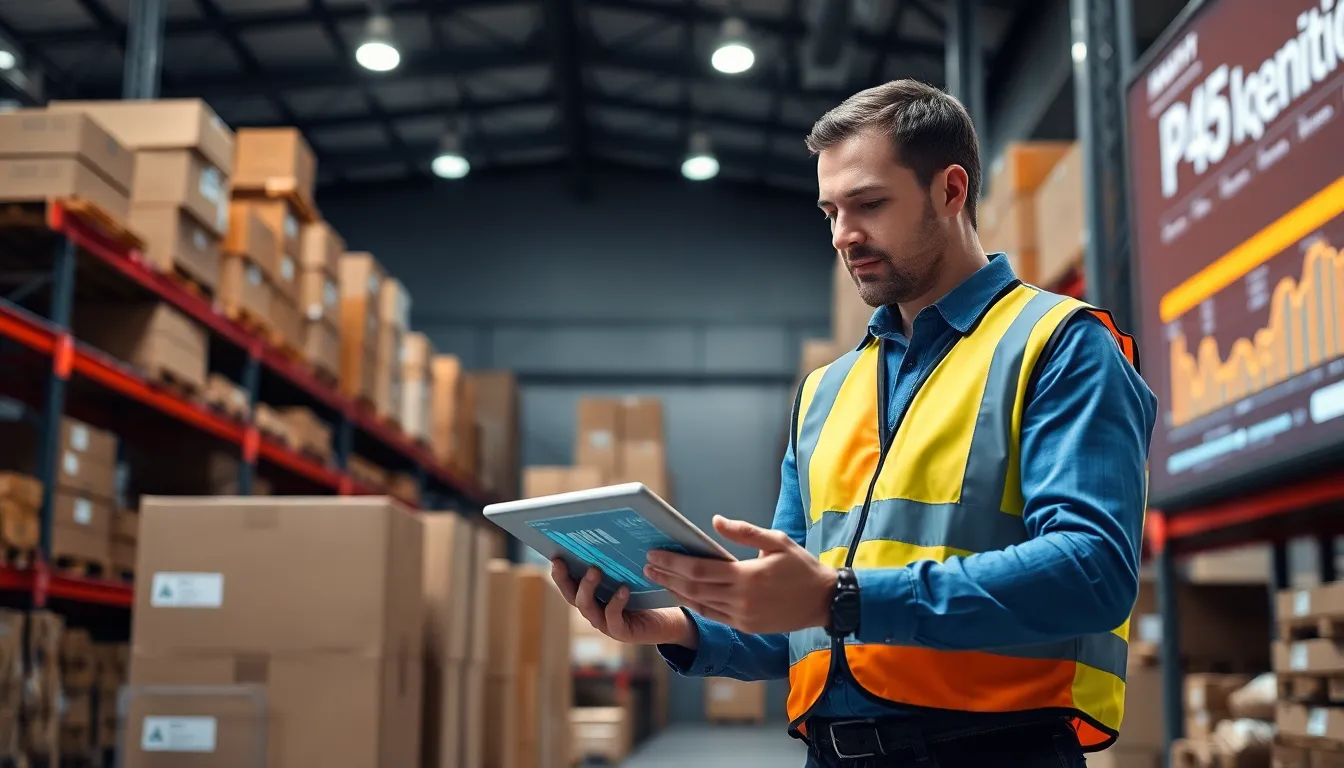In a world where everything’s getting smarter, why should logistics be left behind? Enter IoT logistics solutions, the unsung heroes of the supply chain that make operations smoother than a well-oiled machine. Imagine tracking shipments in real-time, optimizing routes with the precision of a GPS on steroids, and reducing costs while sipping your morning coffee. Sounds dreamy, right?
Table of Contents
ToggleOverview of IoT Logistics Solutions
IoT logistics solutions integrate advanced technologies to streamline supply chain management. Real-time shipment tracking devices provide immediate visibility into the location and condition of goods. Fleet management analytics focus on optimizing routes, reducing delays, and lowering fuel costs. By using sensors and GPS systems, organizations gain deeper insights into vehicle performance and inventory levels.
Predictive analytics enhance decision-making by forecasting demand and identifying potential supply chain disruptions. Automated inventory management systems trigger alerts when stock levels drop, ensuring timely restocking. Furthermore, smart packaging technology monitors the environmental conditions of sensitive items during transit.
Collaboration tools enable seamless communication between suppliers, distributors, and retailers. Data-driven insights from IoT devices foster enhanced cooperation and accountability among stakeholders. These solutions also increase operational efficiency, helping businesses respond swiftly to market changes.
With IoT logistics solutions, companies can achieve significant cost savings. A study reveals that firms adopting these technologies realize up to 15% savings in operational expenses. Enhanced efficiency reduces waste and drives profitability.
Continuous improvement and innovation characterize IoT in logistics. Stakeholders remain committed to leveraging real-time data for strategic advantages. As industries evolve, the adoption of IoT logistics solutions becomes essential for staying competitive in a fast-paced market.
Benefits of Implementing IoT Logistics Solutions


IoT logistics solutions offer transformative benefits that enhance supply chain performance through technology. These advantages encompass improved operational efficiency, increased visibility, and significant cost savings.
Enhanced Efficiency
Enhanced efficiency emerges as a key benefit of implementing IoT logistics solutions. Companies experience streamlined processes due to automated systems that reduce manual tasks. Employees manage fleets with real-time data on vehicle locations and performance metrics. Route optimization occurs naturally, cutting down delivery times and minimizing resource use. Fleet managers respond quickly to potential disruptions, making immediate adjustments to schedules. Overall, operational workflows improve, allowing logistics teams to handle larger volumes effectively.
Improved Visibility
Improved visibility defines modern logistics, thanks to IoT technology. Real-time tracking devices provide constant updates on shipments, allowing stakeholders to monitor goods at every stage. This transparency allows for prompt decision-making, reducing the risk of delays. Supply chain participants access data on the condition of items during transit, which is essential for sensitive products. Enhanced visibility fosters trust and collaboration among partners, ultimately driving accountability across the supply chain. Companies equipped with these insights gain a competitive edge in managing logistics operations.
Cost Reduction
Cost reduction takes center stage when adopting IoT logistics solutions. Studies indicate that organizations can achieve reductions of up to 15% in operational expenses through these technologies. Efficiency gains from automated processes lower labor costs while reducing errors. Predictive analytics identify demand, minimizing excess inventory and associated carrying costs. Implementation of smart packaging technology prevents losses by monitoring sensitive items throughout transit. Logistics firms benefit substantially from this financial flexibility, allowing them to reinvest in growth initiatives.
Key Components of IoT Logistics Solutions
IoT logistics solutions comprise several critical components that enable enhanced operations and efficiency in supply chain management.
Sensors and Tracking Devices
Sensors and tracking devices serve as the backbone of IoT logistics solutions. They provide real-time data on the location and condition of goods. Common examples include GPS trackers that monitor vehicle locations and temperature sensors that ensure sensitive items remain within optimal conditions. These devices collect and transmit data continuously, allowing stakeholders to react promptly to any disruptions. Incorporating RFID tags is another effective way to enhance visibility across the supply chain. By monitoring assets throughout transit, organizations can achieve improved accountability and timely deliveries.
Data Analytics Platforms
Data analytics platforms play a crucial role in interpreting the vast amounts of data generated by IoT devices. Analyzing this data enables fleet managers to identify patterns and make informed decisions quickly. Platforms that leverage machine learning can forecast demand and detect potential disruptions in the supply chain. Predictive analytics drive actionable insights, enhancing operational efficiencies and reducing delays. Implementing these platforms not only streamlines decision-making but also supports continuous improvement within logistics operations. With enhanced analytics capabilities, companies can optimize routes and inventory levels effectively.
Cloud Computing
Cloud computing underpins the infrastructure of IoT logistics solutions. It offers scalable resources necessary for storing and processing data derived from various IoT devices. By utilizing cloud platforms, organizations benefit from improved accessibility and collaboration among stakeholders. Data stored in the cloud can be accessed in real-time, which facilitates faster decision-making and response strategies. Cloud computing also enhances security measures, ensuring sensitive information remains protected. By integrating cloud technologies, logistics companies can achieve greater operational flexibility and responsiveness to market changes.
Challenges in IoT Logistics Solutions
Challenges persist in the deployment of IoT logistics solutions, impacting their effectiveness. Key issues include security concerns and integration problems.
Security Concerns
Security risks pose significant challenges for IoT logistics. Data breaches and cyber-attacks can compromise sensitive shipment information and disrupt operations. Ensuring robust encryption protocols and frequent software updates remains crucial in safeguarding data. Device vulnerabilities often expose the entire network to threats. Implementing multi-factor authentication and continuous monitoring mitigates these risks. Organizations investing in workforce training on security best practices enhance overall data protection. The growing sophistication of cyber threats necessitates a proactive approach to security in logistics.
Integration Issues
Integration creates obstacles in implementing IoT logistics solutions. Disparate systems may lack compatibility, complicating data sharing across platforms. Challenges arise when combining legacy systems with new technologies, leading to operational inefficiencies. Smooth integration between various devices and data analytics platforms remains paramount. Effective communication between stakeholders often diminishes due to integration hurdles. Organizations adopting standardized protocols streamline data flow and enhance collaboration. Focusing on seamless technology integration aids in maximizing the benefits of IoT logistics solutions.




